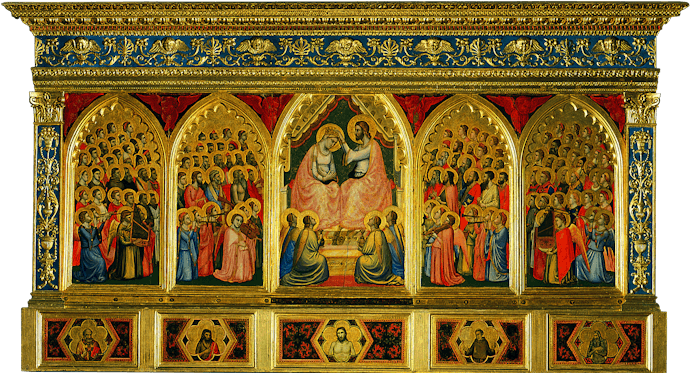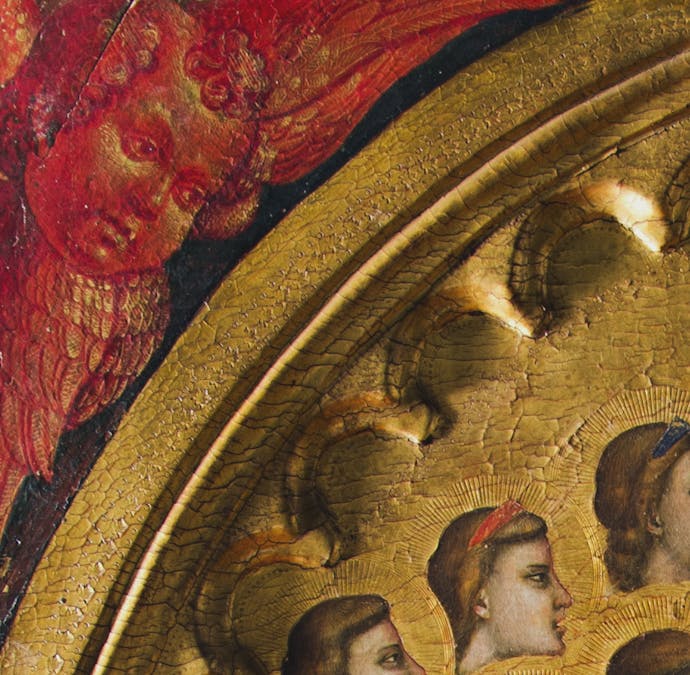Giotto
Artist: Giotto di Bondone (Colle di Vespignano, Mugello c. 1267 - Florence 1337) and workshop
Title: Coronation of the Virgin with Angels and Saints (Baroncelli Polyptych)
Date: after 1328; framed in Domenico Ghirlandaio's workshop (end of XV century)
Dimensions: 186 x 342 x 27 cm
Material and tecnique: tempera and gold on wood; carved and gilded wood (frame)
Inscription: "OPUS MAGISTRI IOCTI"
Position: Basilica of Santa Croce, south aisle, Baroncelli chapel, altar
Despite the polyptych – the chapel's visual focal point – bearing the inscription "work of the master Giotto", it was long attributed to Taddeo Gaddi who painted the frescoes and made the cartoons for the stained glass. Restored to Giotto by scholars, it is the artist's only panel painting still in its original position and one of only three works he ever signed. It may be dated to some time after the chapel's foundation in 1328 and reveals the influence of his years in Naples from 1328 to 1333.

Giotto, IOCTI, detail with inscription of Coronation of the Virgin with Angels and Saints (Baroncelli Polyptych), after 1328. Santa Croce basilica, right transept, Baroncelli chapel
The polyptych originally had five pinnacled sections but was squared off in the late 15th century, eliminating the "Gothic" pinnacles to achieve a rectangular shape more in keeping with the taste of the time, decorating the frame with carved candelabra and angels' heads, and adding six foreshortened cherubs in the segments between the panels.
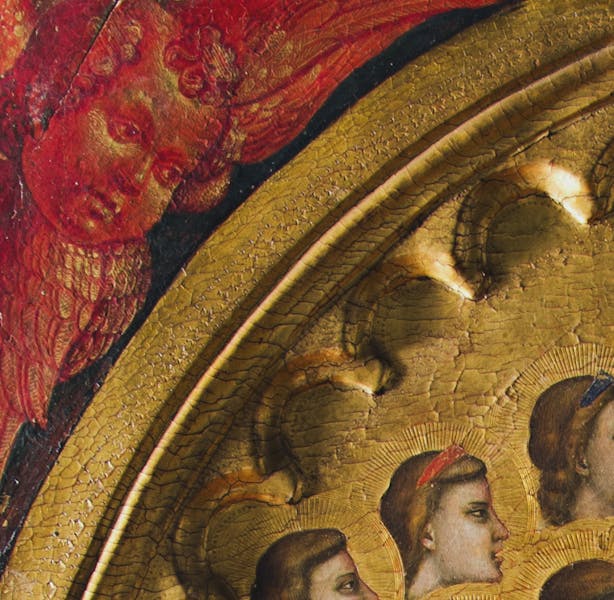
Sebastiano Mainardi (?), Cherub, c. 1485-1490, detail of Coronation of the Virgin, detail of Coronation of the Virgin with Angels and Saints (Baroncelli Polyptych), after 1328. Santa Croce basilica, right transept, Baroncelli chapel
This may have been the work of Sebastiano Mainardi, who painted a fresco of the Madonna of the Girdle to a cartoon by Domenico Ghirlandaio in the chapel some time between 1485 and 1489. The renovation points up the reputation Giotto still enjoyed in the second half of the 15th century, because it was decided to modernise the polyptych's structure yet without changing the painted panels (the central pinnacle depicting God the Father with Angels is now in the San Diego Museum of Art in California).
The central panel depicts the Coronation of the Virgin with angels, while the four side panels host a multitude of saints, angel musicians and singing angels – over 120 figures in a triumph of colours, faces, halos and expressions! Despite being broken down into separate panels, the polyptych conveys an innovative impression of a single space complementing the search for realistic depiction, for example in the angels forcefully filling their cheeks to play their instruments.
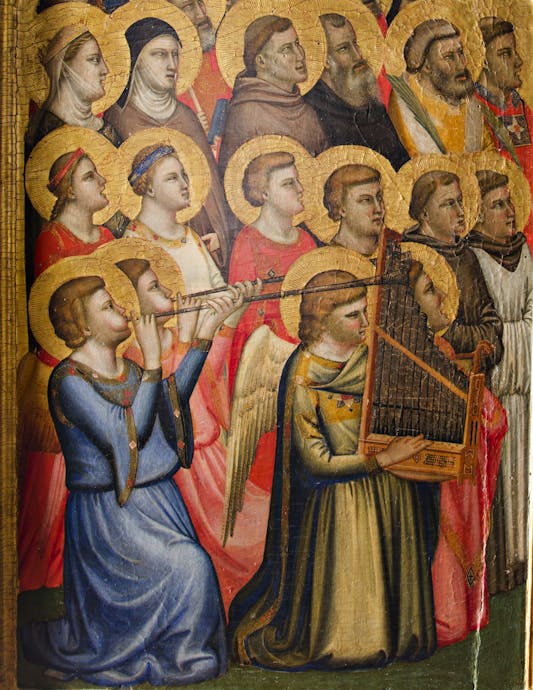
Giotto, Angel musicians, detail of Coronation of the Virgin with Angels and Saints (Baroncelli Polyptych), after 1328. Santa Croce basilica, right transept, Baroncelli chapel
The panel's complex iconography has been interpreted as a figurative representation of Canto XXXII in Dante's Paradiso, where the poet describes angels and saints witnessing the coronation of the Virgin.
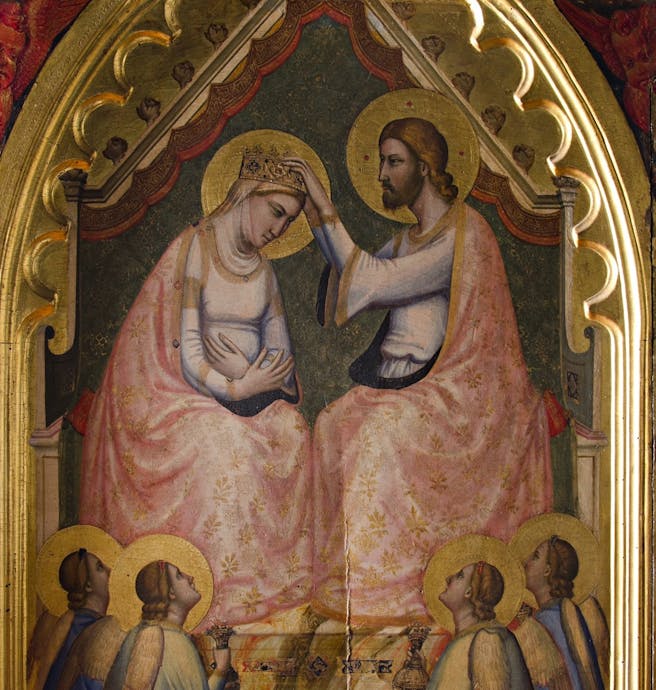
Giotto, Coronation of the Virgin, detail of Coronation of the Virgin with Angels and Saints (Baroncelli Polyptych), after 1328. Santa Croce basilica, right transept, Baroncelli chapel
Please note: The Baroncelli Polyptych is temporarily on loan to the "Dante. The vision of art" exhibition at the Musei San Domenico in Forlì as part of the celebrations to mark the 700th anniversary of the poet's death.
